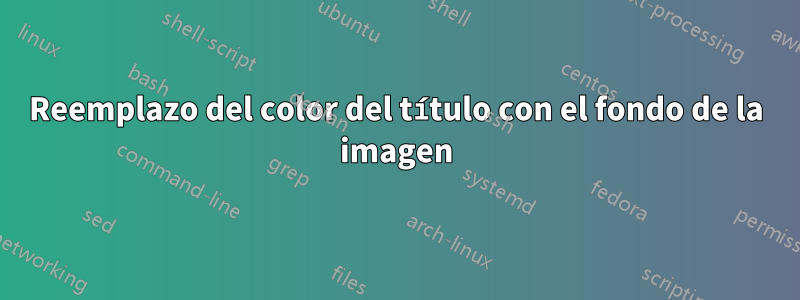
Esta es una pregunta de seguimiento paraUn método conveniente para adaptar perfectamente una imagen a una imagen Ps
Considere el código
\documentclass[a5paper,12pt,onecolumn,openany,final]{book}
\usepackage[hmargin=0.7in,vmargin=0.75in]{geometry}
\usepackage{pstricks,psvectorian}
\usepackage{scalerel} % For Vertical Stretch of Letters
\usepackage{graphicx}
\usepackage{color}
% Overlay Title
\newcommand{\mytitle}[1]% #1 = title
{\bgroup
\Huge
\sbox0{\parbox{\columnwidth}{\centering\textbf{\color{black}#1}}}%
\sbox1{\parbox{\columnwidth}{\centering\textbf{\color{white}#1}}}%
\usebox0\llap{\raisebox{1.45pt}{\usebox1}}
\egroup}
\begin{document}
\thispagestyle{empty}
\begin{pspicture}(-5,-5)(5,12)%
\psframe[linecolor=black,linewidth=4pt](-5,-5)(5,12)%
\rput(0,3.5){\includegraphics[width=.87\linewidth,height=1.49\linewidth]{example-image-a}}
\end{pspicture}
\newpage
\thispagestyle{empty}
\begin{pspicture}(-5.09,-5.09)(5.09,12.09)%
\renewcommand*{\psvectorianDefaultColor}{yellow!65!red}%
\psframe[fillcolor=yellow!65!red,fillstyle=solid](-5,-5)(5,12)
\psframe[linecolor=black,linewidth=4pt](-5.09,-5.09)(5.09,12.09)%
% TITLE
\rput(0,6.25){\vstretch{1.25}{\mytitle{CUT-OUT TITLE}}}
\rput(0,5){\vstretch{1.25}{\mytitle{AND PLACE}}}
\rput(0,3.75){\vstretch{1.25}{\mytitle{OVER IMAGE}}}
\end{pspicture}%
\end{document}
que produce las dos páginas de salida
PREGUNTA: ¿Cómo puedo, efectivamente, eliminar las tres líneas?porción blancadel título en la página 1 pspicturey luego superponerlo pspictureen la imagen de la página 1, de modo que lo que aparece es la página 2 pspicturecuyo título ya no es blanco, sino que contiene la imagen de la página 1 como fondo.
Nota:La superposición negra original producida por \mytitlepermanecerá visible en la versión revisada pspicture.
Respuesta1
funciona solo conlatex->dvips->ps2dpf
\documentclass{book}
\usepackage{pstricks}
\usepackage{graphicx}
\usepackage{pst-char}
\DeclareFixedFont{\RM}{T1}{ptm}{b}{n}{2cm}
\begin{document}
\begin{pspicture}(-5,-5)(5,12)%
\begin{pscharclip}[linewidth=0.1pt]{\rput(0,3.5){\RM\shortstack{Cut-out title\\line 2\\line 3}}}%
\rput[lb](-5,-5){\includegraphics[width=10cm,height=17cm]{example-image-a}}
\end{pscharclip}
%\psframe[linecolor=black,linewidth=4pt,dimen=inner](-5,-5)(5,12)%
\end{pspicture}
\end{document}
Respuesta2
Puedes hacer uso del \pscharclipque viene con el pst-textpaquete:
\documentclass[a5paper,12pt,onecolumn,openany,final]{book}
\usepackage[hmargin=0.7in,vmargin=0.75in]{geometry}
\usepackage{pstricks,psvectorian,pst-text}
\usepackage{scalerel} % For Vertical Stretch of Letters
\usepackage{graphicx}
\usepackage{color}
% Overlay Title
\newcommand{\mytitle}[1]{% #1 = title
\parbox{\columnwidth}{\centering\Huge\textbf{#1}}%
}
\newcommand{\mytitleA}[1]% #1 = title
{\bgroup
\Huge\textbf{#1}%
\egroup}
\begin{document}
\thispagestyle{empty}
\begin{pspicture}(-5.09,-5.09)(5.09,12.09)%
\renewcommand*{\psvectorianDefaultColor}{yellow!65!red}%
\psframe[fillcolor=yellow!65!red,fillstyle=solid](-5,-5)(5,12)
\psframe[linecolor=black,linewidth=4pt](-5.09,-5.09)(5.09,12.09)%
% TITLE
\newdimen{\shiftedY}
\pssetlength{\shiftedY}{5cm}
\psaddtolength{\shiftedY}{-1.45pt}
\rput(0,\shiftedY){\vstretch{1.25}{\mytitle{CUT-OUT TITLE \\ AND PLACE \\ OVER IMAGE}}}
\pscharclip[linewidth=0pt,linestyle=none]{
\rput(0,5){\vstretch{1.25}{\mytitle{CUT-OUT TITLE \\ AND PLACE \\ OVER IMAGE}}}
}
\rput(0,3.5){\includegraphics[width=.87\linewidth,height=1.49\linewidth]{example-image-a}}
\endpscharclip
\end{pspicture}%
\end{document}
Usandoesta buena sugerenciaComo punto de partida, puede hacer lo siguiente usando TikZ. Intenté recrear tu ejemplo lo más fielmente posible, pero todavía parece ser diferente, especialmente en lo que respecta al tamaño de fuente. Espero que la idea principal quede clara de todos modos. Deberías usar PDFLaTeX o LuaLaTeX para compilar esto.
\documentclass[a5paper,12pt,onecolumn,openany,final]{book}\usepackage[hmargin=0.7in,vmargin=0.75in]{geometry}
\usepackage{tikz}
\usetikzlibrary{fadings}
\newcommand{\mytitle}[2]{%
\begin{tikzfadingfrompicture}[name=mytitle, color=transparent!0]
% create fading from title
\node[text width=\linewidth, align=center, font=\bfseries\Huge, yscale=1.25, transform shape] at (current page.center) {#2};
\end{tikzfadingfrompicture}%
\begin{tikzpicture}[overlay, remember picture]
% orange background
\fill[yellow!65!red, draw=black, line width=8pt] (current page.south west) rectangle (current page.north east);
% text title shadow
\fill[path fading=mytitle, fit fading=false, fading transform={shift=(current page.center)}, transform canvas={xshift=1pt, yshift=-1pt}] (current page.south west) rectangle (current page.north east);
% text title cut out
\fill[path fading=mytitle, fit fading=false, fading transform={shift=(current page.center)}, path picture={\node at (path picture bounding box.center) {
\includegraphics[height=\paperheight, width=\paperwidth, keepaspectratio]{#1}
};}] (current page.south west) rectangle (current page.north east);
\end{tikzpicture}%
}
\begin{document}
\thispagestyle{empty}
\mytitle{background}{CUT-OUT TITLE \\ AND PLACE \\ OVER IMAGE}
\end{document}







